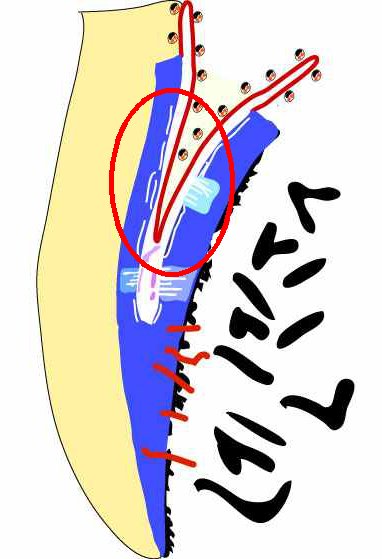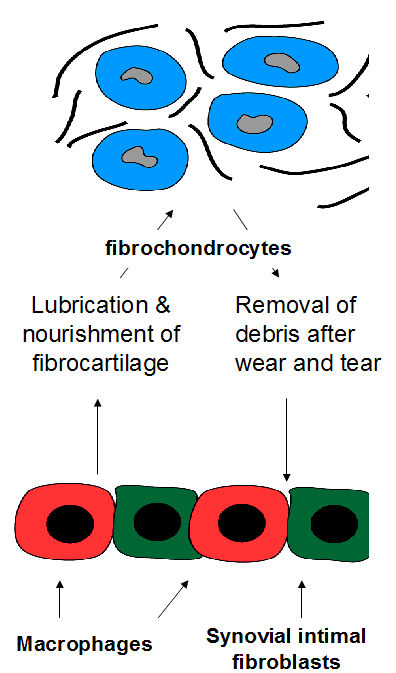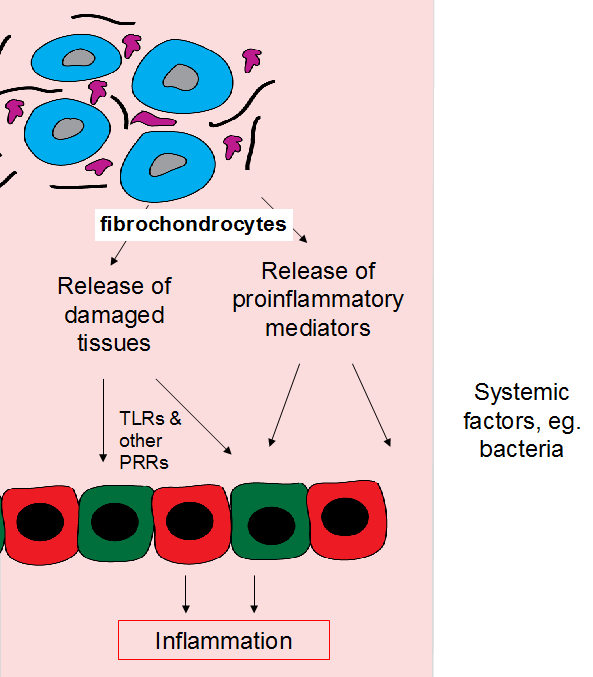The Synovio-Entheseal Complex (SEC)
Historically enthesitis was viewed as a focal disorder at the exact point where tendons or ligaments join the skeleton.
It is now known that the enthesis is a more than just an insertion but forms an enthesis organ.
A key component of many enthesis organs is a specialised structure called a Synovio-Entheseal Complex.
There are multiple Synovio-Entheseal Complexes throughout the body.
These structures lead to patients with some types of arthritis coming to medical attention with joint swelling. However, the primary underlying problem relates to the Synovio-Entheseal Complex.
The fibrocartilages on the under surface of tendons or ligaments adjacent to bones are often located inside joints or "intra-articular". These form parts of structures called a bursa. This is lined by synovium.
Synovium provides lubrication and oxygen and nutrition for periosteal and sesamoid fibrocartilages so aides in their nourishment and function of the enthesis.
It is also responsible for the removal of micro-debris that occurs in the course of normal enthesis activity.
This is analogous to the generation of metallic micro particles with engine wear but the Synoio-Entheseal Complex is a biological filter that clears the fluid.
The synovial cells that remove damaged tissue are termed macrophages which are potentially highly prone to initiating inflammatory reactions.
This is a major contributor to pain and inflammation in subjects with enthesitis or enthesopathy.
The highly stressed fibrocartilages are somewhat analogous to the heat resistant tiles on a space shuttles nose.
These tiles resist high levels of stress and heat but if they come off there can be serious consequences.
It is likewise with the enthesis with the fibrocartilages resisting stress at the point of insertion to the bone and also the adjacent bone surfaces.
If a problem arises in the fibrocartilages then this can lead to inflammation in adjacent synovium.
The implication of this is that people with diseaes of the enthesis come to medical attention with joint swelling.
 |
 |
| The left image shows a low power microscopic image of the Synovio-Entheseal Complex. The image on the right shows the same structure in cartoon form. There is fibrocartilage at the insertion and also lining the adjacent bone (sea blue in left image and dark blue in cartoon). This is associated with a cavity which is lined by a specialised tissue called synovium. This is shown in red in cartoon form. The synovium lubricates and nourishes the cartilage. The Synovio-Entheseal complex is shown within the red circle. The cartoons below shows how this Synovio-Entheseal Complex leads to joint pathology. | |
Synovio-Entheseal Complex in Health |
| This is a cartoon of the microscopic features of the Synovio-Entheseal Complex. The cells within the fiborcartilage are called fibrochondrocytes. These cells make a stress resistant spongy matrix called Glycosanaminoglycans (GAGs). The fibrocartilage has no blood supply in health and relies on the adjacent synovium for nourishment. The synovial lining has two specialised cell types called fibroblasts and macrophages that nourish it and maintain its integrity during health. During disease states the macrophage cells may play a major role in driving inflammation. |
Synovio-Entheseal Complex in Disease |
| This is a cartoon of the microscopic features of the Synovio-Entheseal Complex during disease of the enthesis. Damage to the enthesis with release of microscopic debris may lead to an abnormal reaction with tissue inflammation and swelling rather than tissue repair that should occur in health. There are multiple other mechanism whereby dysregulation of normal immune responses at the Synovio-Entheseal Complex may lead to inflammation. Above 3 images taken from McGonagle et al. Arthritis & Rheumatism 2007 |
 |
| In joints like the knee and small joints of the hands there are multiple Synovio-Entheseal Complexes that jut into the joint cavity. This is a complex anatomical inter-relationship and is reminiscent of the complexity of the relationship of the West coast of Scotland to the sea. Patients with Psoriatic Arthritis and the seronegative Spondyloarthropathies come to medical attention with joint swelling that is due to Synovio-Entheseal Complex primary problems. |
